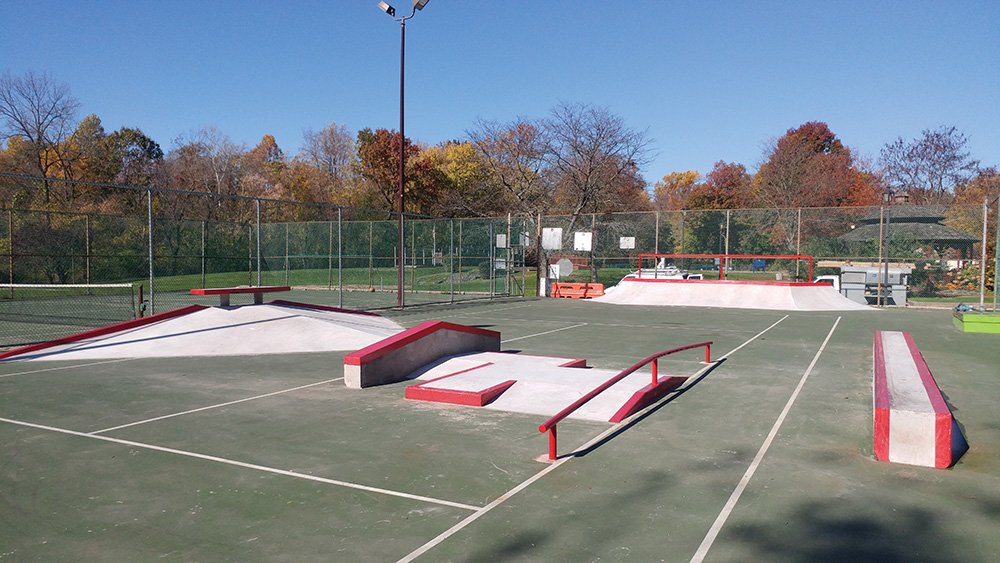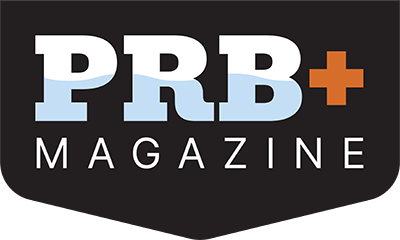Skatepark-development pitfalls to avoid
By Alec Beck
Photos: The Skatepark Project
While there are many challenges in developing a public skatepark, a few common pitfalls can be easily avoided. Skating around these snares can help create the most popular recreation facility in town as quickly and efficiently as possible.

Community Involvement
Like any community amenity, local involvement is key. Having a group of dedicated advocates on a skatepark committee can relay important information to the user base as well as create an early sense of stewardship for the future skatepark. Remember that many of the interactions local skaters have with authority figures (in a community without a skatepark) may be historically negative. But, when approached (often through a local skate shop, flyers, or a social skate club) most skaters are ready and eager to weather the civic-engagement process on behalf of a safe skate space.
Group Dynamics
A unified front is vital when facing a council or commission. Members of the committee or group should be on the same page, have focused their efforts, and understand the plan before each meeting. Sometimes, multiple organizations will be working toward the same goal. It’s usually best to come together under one name (i.e., “Location/Town Name Skatepark Committee”). Occasionally, there may be passionate disagreements about skatepark design; that’s merely a stage in the process to have members’ voices heard when they meet with the skatepark designer. These can be exciting moments of civic engagement for skaters. But until then, it’s to be a unified effort.
Inclusion And Accessibility
Be sure to include all types of skatepark users. This includes a diverse community, as well as the different types of rideables. Demonstrate the values of a community when creating digital or printed materials supporting a skatepark. Modern skateparks are built for “all wheels,” which means skateboards, BMX bikes, inline skates, quad (roller) skates, WCMX (wheelchair motocross), and scooters.
Quality
Contemporary municipal skateparks are constructed with poured-in-place concrete. Hiring experienced skatepark design or construction specialists is the quickest way to success. Rideable wheels are measured in millimeters and skateparks are sculptural concrete. Utilize stringent bid specs and/or quality-based selection processes (such as a Request For Qualifications) when going to bid. In reviewing proposals, hire a specialty skatepark construction firm that has been responsible for the footprint of an actual skatepark—either as a primary or as a subcontractor—for a minimum of three concrete parks in the last five years. If a firm cannot match that requirement, ensure that key personnel can match the required experience.

Customization
Skateparks should never be cookie-cutter or replicated. They are unique to each community and can serve as a concrete monument to the history of an area. Showcasing a place of community pride can help garner additional support from community members.
Site Selection
Site selection is one of the most important considerations in skatepark development, and plays a huge role in the long-term success of a public space. There will likely be a site-selection process that examines a number of potential sites for the skatepark based on attributes like visibility, activity, comfort, and restrictions. Because these non-traditional recreational spaces are informally supervised by the community, it’s helpful that a skatepark is highly visible from the road and other local thoroughfares. This helps maintain stewardship and deters antisocial behavior. Conversely, skateparks can be an excellent venue for “activating” an area by providing intentional activity, as long as the park is well-designed to encourage participants and create a sense of safety and comfort for visitors. Also, ensure that the space is accessible by public transportation, bikes, and on foot. The most effective way to do this is to have a centralized site. This also allows supportive parents access to amenities such as other sports fields, shade, water, lighting, and restrooms. Cultural significance, geographical restrictions, and long-term plans should also be considered. Work with a designer and planners to find the best fit.
Design
A contemporary design will attract the desired users. The professionals should work with the local action-sports community to co-design the space. This gets local youth and adults engaged, and ensures a sense of ownership from the beginning, resulting in long-term stewardship of the space and a design that reflects the needs and desires of a community. This user-centric design process provides locals with concrete proof of the value of community engagement and local government. While beginners can learn at the bottom of a bowl, and pros can learn new tricks on beginner obstacles, it’s important to carve out a design that has different areas catering to different skill sets, allowing better flow and functionality in the park. Finally, with today’s construction techniques, there’s no reason to exclude any action sports—with the sole exception of needling plastic BMX pegs or no pegs on pool coping—a rule that can be identified with signage.
Environmental Impact
A skatepark project can be cleaner by utilizing recycled materials (aggregate, fill, etc.) that will go a long way in creating an environmentally friendly public space. Native landscaping and shade trees will sequester carbon and keep ground temperatures lower. Stormwater best practices are a must. If the budget allows, it’s worth requesting quotes for some of the bleeding-edge, sustainable concrete options, like carbon-sequestering concrete or low-embodied carbon concrete. The cost may be higher, but it’s an investment for the next generation. Finally, request that builders form with soil, not construction foam. These methods help minimize the carbon footprint of a project. Consider educational signage about these integrations to help educate users.
Operation
Ensure the greatest return for skatepark investment by minimizing barriers to access. Start with having reasonable hours. Skateparks aren’t only for kids, so having hours for the average working adult makes the space more valuable. A standard time frame is dawn to dusk, or dawn to late evening with lights. Closing early encourages users to skate elsewhere in town. Other types of access restrictions include entry fees, waivers, and unnecessary pad enforcement. Some communities leave this to personal choice for riders over 18. At the least, it is recommended that users under 18 wear a helmet.
As with other public facilities, skateparks can attract people of all backgrounds and stages of life. If there are issues, such as inappropriate use or destruction of property, do not close the entire skatepark due to the actions of a few individuals, as these are often not the people who are using and benefiting from the park.
Skatepark projects aren’t always easy to build, but they are worth it. These simple tips can help you stay on track during the public-skatepark development process.
Alec Beck is the Manager of Public Education at The Skatepark Project (TSP, formerly known as the Tony Hawk Foundation). Founded by Hawk, TSP is a nonprofit organization working to increase access to outdoor recreation and free play through the creation of safe and inclusive community skateparks. TSP provides the resources, advocacy skills, grants, and fellowship programs that guide skaters in creating their own community skateparks, from conception through construction. This collaborative process between skaters and city authorities to invest in capital improvements will enrich a community for decades. TSP’s grant programs have awarded over $10 million to help fund nearly 700 public skateparks in all 50 states, enjoyed by an estimated 6-million people annually. The organization’s International Program has provided technical and financial support to assist youth through the Skateistan educational programs in Afghanistan, Cambodia, and South Africa. To get involved, visit https://skatepark.org/.

